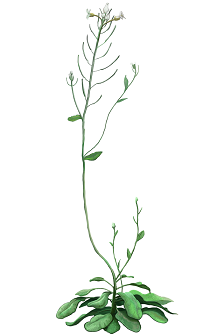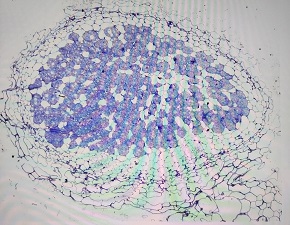MIT in Boston (UsA) is one of the scientific centres developing initiatives to stop climate change. On April 11, it announced five flagship projects in its Climate Grand Challenges. Among these, a project Revolutionizing agriculture with low-emissions, resilient crops. Intended to create self-fertilizing crops that reduce greenhouse gas emissions produced by agricultural fertilizer; and to halt yield decrease of many agricultural crops as a result of climate change.

The other projects selected include a computational model for climate predictions; a centre that will reinvent and electrify the processes and materials behind hard-to-decarbonize industries like steel, cement, ammonia, and ethylene production; model development for the prediction of climate and weather extremes; and the development of a climate resilience early warning system.
More resilient crops
For most of human history, according to news.mit.edu, climate change occurred gradually, over hundreds or thousands of years. Plants could adapt to variations in temperature, precipitation, and atmospheric composition. But human-driven climate change occurs much more quickly. Crop plants have suffered. Yields are down in many regions, as is seed protein content in cereal crops.
Therefore, says team member Mary Gehring, we need to develop fundamental mechanisms for bioengineering a wide variety of crop plants. These need to stay both healthy and nutritious in the face of our changing climate. But many of the relevant traits in plants appear to be controlled by epigenetics — that is, by information outside of the DNA sequence. Therefore, these traits aren’t as a rule passed on to the offspring.
Asexual reproduction
Gehring studies the process of clonal (or asexual) production of seeds, genetically identical to the maternal parent. About 1 percent of flowering plant species can asexually pass on information to the offspring. It is probable, says Gehring, that genes controlling such pathways are already present within crop plants. Her challenge is ‘to tweak those genes and pathways so that the plant switches reproduction from sexual to asexual.’
Much of her work concentrates on the modest plant Arabidopsis thaliana (thale cress). An unpretentious little plant, but one of which we have deciphered the entire genome. In this species, there exist pathways related to autonomous asexual development of the endosperm — the seed’s nutritive tissue. Gehring’s research intends to discover which genes are responsible for those pathways. And induce the plant to retain that material, promoting asexual reproduction. The next step being to introduce such a mechanism into a wide range of crop plants. They could then create new crop breeds able to withstand changing environments; or breeds that require less fertilizer and fewer pesticides.

Creating self-fertilizing crops
Agriculture is a major emitter of greenhouse gases. In the United states, it is responsible for roughly a quarter of those emissions. Fertilizer production and use account for about one third of this amount. Moreover, fertilizer production consumes major quantities of natural gas and other nonrenewable resources. On top of that, much of the nitrogen fertilizer becomes runoff that pollutes local waterways.
All this could be prevented if we should use self-fertilizing crops, capable of drawing nitrogen from the air, in interaction with bacteria present in the soil. Team member Jing-Ke Weng intends to introduce such characteristics, present in bean and pea plants, into other crops. Genetically bioengineer crops to create their own fertilizer. Well, not create it themselves but allow nitrogen-fixing microbes living in a symbiotic relationship with them, to do so. Weng concentrates on modifying cereal crop plants such as corn, rice and wheat, which account for about 75% of global food production. ‘Legumes such as bean and pea plants can form root nodules through which they receive nitrogen from rhizobia bacteria in exchange for carbon,’ says Weng. ‘This metabolic exchange means that legumes release far less greenhouse gas, and require far less investment of fossil energy, than do cereal crops.’
Major potential
In short, Weng and his team intend no more and no less than to create self-fertilizing crops that contain this legumes’ ‘self-fertilizing’ capacity. A multi-stage project. First, they will decipher the small-molecule signalling processes between legumes and rhizobium bacteria. Then they will genetically engineer an analogous system in nonlegume crop plants. Next, they will identify which small molecules excreted from legume roots prompt a nitrogen/carbon exchange from rhizobium bacteria. Finally, they will genetically engineer the biosynthesis of those molecules in the roots of nonlegume plants, hoping that this will set in motion the entire process of feeding the cereal crops with the much-needed nitrates.
The potential of this project to create self-fertilizing crops is staggering. ‘Focusing on corn alone, this could reduce the production and use of nitrogen fertilizer by 160,000 tons,’ Weng says. And it could halve the emissions of nitrous oxide, a greenhouse gas emitted in the production of fertilizer, about 300 times as strong as carbon dioxide.
Interesting? Then also read:
Healthy soils for a productive bioeconomy
Plant biostimulation, a new chapter in agriculture
Fungi for healthy forests
